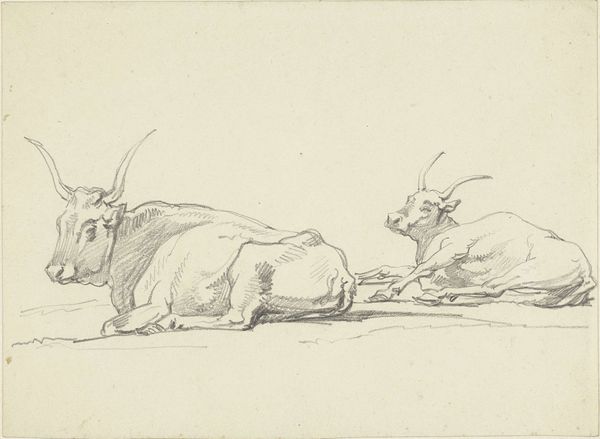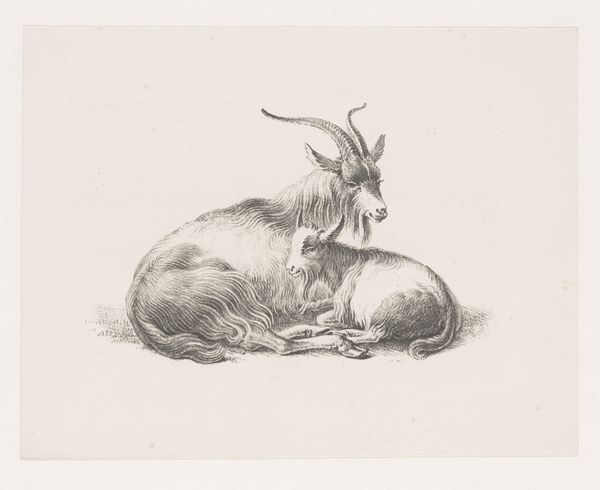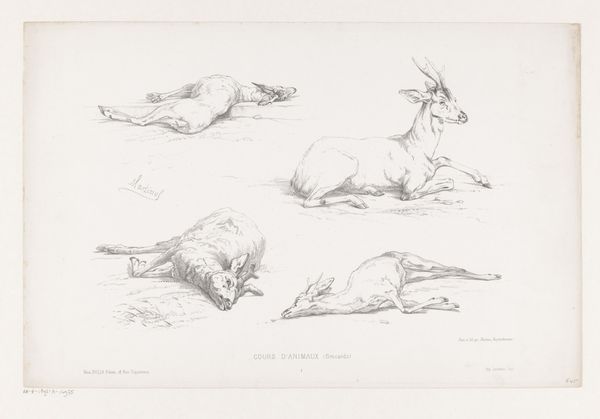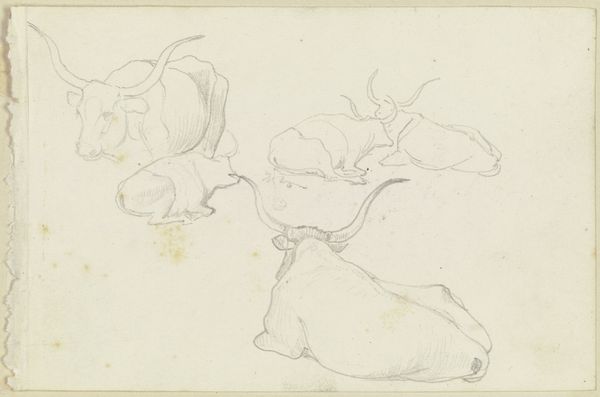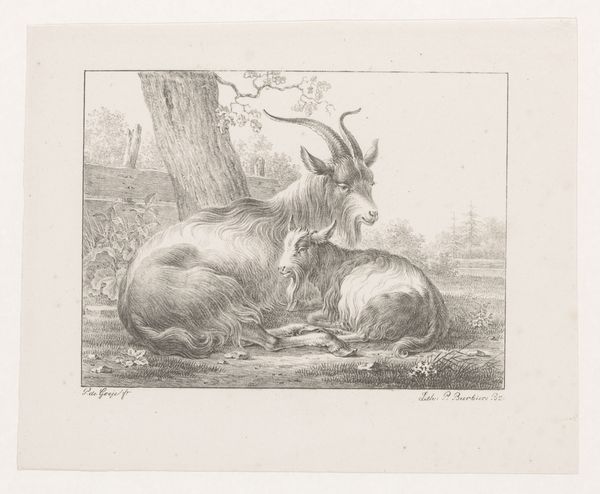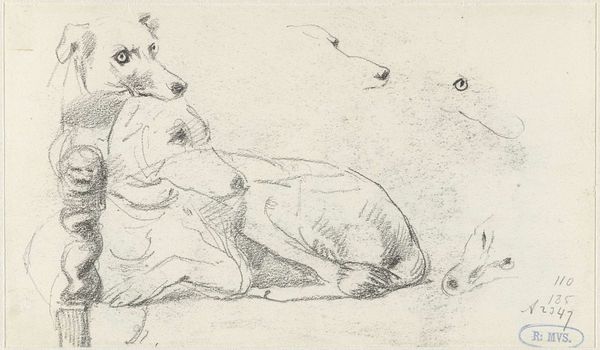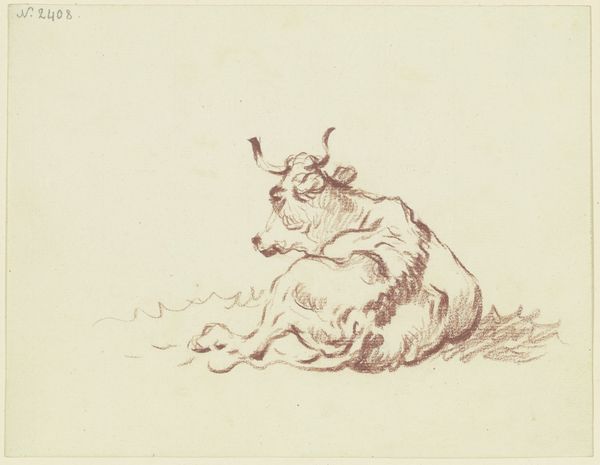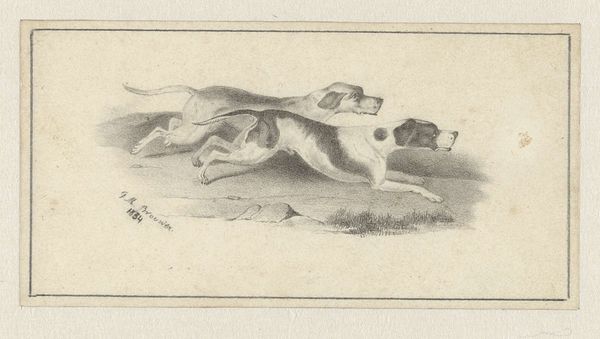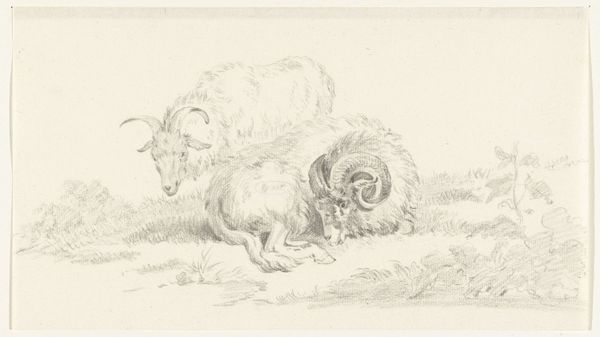
drawing, pencil
#
pencil drawn
#
drawing
#
pencil sketch
#
landscape
#
figuration
#
pencil
#
pencil work
#
realism
Dimensions: height 203 mm, width 242 mm
Copyright: Rijks Museum: Open Domain
Curator: Here we have "Three Lying Goats," a pencil drawing by Abraham Teerlink, created sometime between 1786 and 1857. It’s currently held here at the Rijksmuseum. Editor: The immediate impression I get is one of serene domesticity, despite the somewhat austere medium. There's a stillness, a quiet intimacy within this small pastoral scene. Curator: The artist clearly possessed a talent for capturing the essence of his subjects. Look at the detail in the rendering of the goats’ fur, for example, and how their forms are imbued with an almost tangible sense of weight. Beyond simple realism, might these animals also invoke broader symbols, linking them, say, to pre-Christian pastoral rites, perhaps a more contemporary commentary about land use, agrarian societies, or social power structures of the time? Editor: Possibly, though to me, it seems safer to avoid a reach. Teerlink could well have captured just farm animals from everyday life, as seen from an elite perspective, or as romantic symbols from bucolic, working class existence that the privileged might only have an imaginary contact with. Note how placid and resigned the animals appear; they’re subjects to larger socio-economic forces, or in this drawing, mere subjects for an artist. Curator: Your points about labor and social structures are very well taken. But the long history of the goat as a symbol is hard to ignore. Throughout many Western, Asian, and African cultures, these animals represent virility, strength, leadership, and even sacrifice. So what visual cues might signify similar attributes here, for example, by depicting the size, features, and positions of specific animals? Editor: In this rendering? No signs of strength, power, or virility for sure. And that may be precisely the point, to demonstrate a simple vulnerability. Look at the almost resigned acceptance in their poses. Do you feel there may be even an aspect of the absurd that underscores the irony here, where animals are literally ‘lying’ around for no apparent reason? They have neither work nor rest. Curator: It's interesting you say "absurd." It's true the piece deviates from the overtly allegorical traditions by choosing instead to spotlight the quiet and unassuming reality of these creatures in repose. Editor: So maybe we could say this drawing anticipates a shift in perspective: not using animals to merely symbolize abstract concepts but inviting empathy to see their specific condition as well? Curator: It could even represent an invitation for people from different perspectives, interests, and conditions to “lie together” like this more often! Editor: And hopefully, in a bit more comfort than what the artist gave them.
Comments
No comments
Be the first to comment and join the conversation on the ultimate creative platform.
